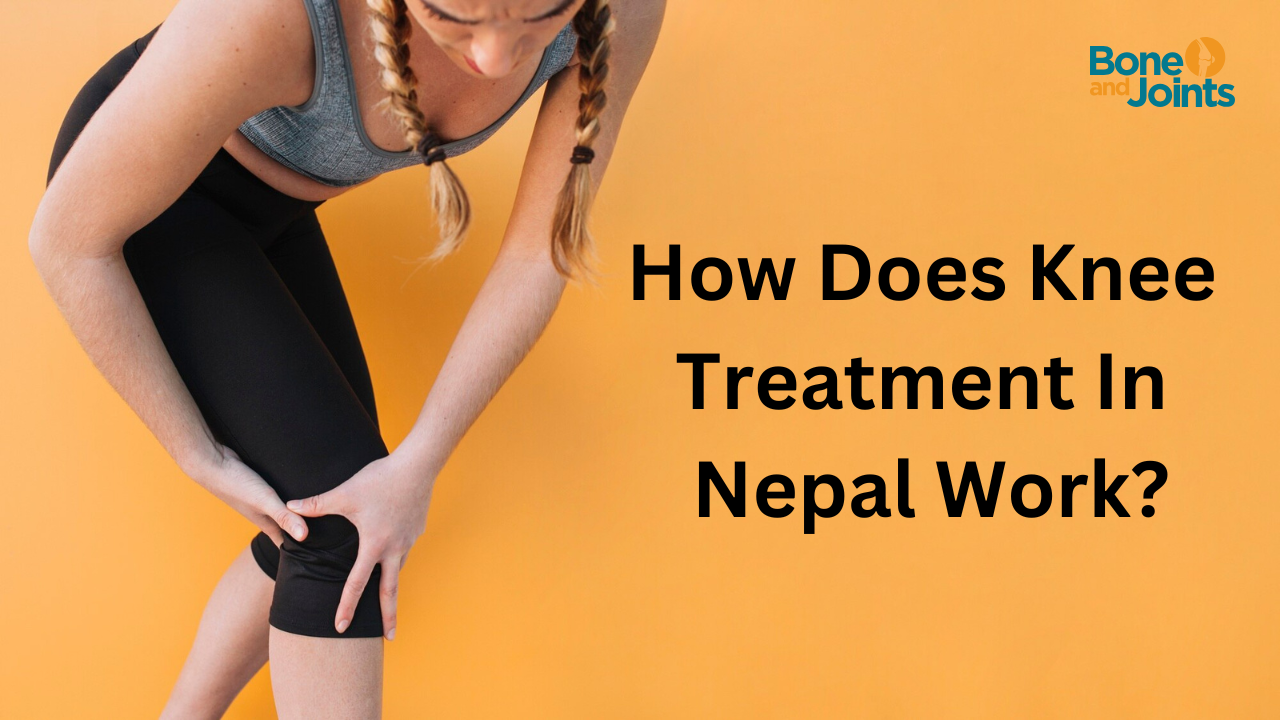How does knee treatment in Nepal work?
Knee injuries can be daunting for everyone. And that’s not just because of the loss of mobility that usually accompanies it. The uncertainty about recovery and finding the best option for yourself also poses a great challenge.
This is especially true in the age of the internet, where misinformation is rife. To combat that, this article goes through the workings of knee treatment in Nepal.
In this blog, we try to make that choice a little easier for you. We look through the different types of knee injuries and the possible treatment options you have for each one in Nepal.
What are the different types of knee injuries?
Like with almost every other type of ailment originating from the bone, there are different types of knee injuries that one can acquire. In this section, we discuss the variety of knee injuries in detail.
1) Fractures:
When we talk about fractures, knee fracture is probably not the first one that pops into your mind. Hip, ankle and wrist fractures are generally more common. Although rare, knee fractures can be scary.
To be fair to you, knee fracture doesn’t really tell the whole story. What we’re referring to as knee fracture is a kneecap fracture in actuality(also referred to as patellar fracture) and it is caused by a direct blow to the knee.
The cause for the direct blow can vary, although falls are motor vehicle accidents are common.
The treatment of kneecap fracture varies from case to case depending upon severity. Generally, both surgical and non-surgical options are available.
The non-surgical treatment is recommended for less severe fractures and includes options like using a cast or a splint, pain medication and physical therapy.
Surgical treatment includes, as the name implies, surgical procedures which can range from using screws, pins and wires to hold the patella to the removal of parts of the kneecap.
2) Anterior Cruciate Ligament(ACL) injury:
Anterior Cruciate Ligament tear, ACL for short, is most commonly associated with athletes, and that might be where you first heard about it.
As the name implies, ACL injury refers to the condition where the anterior cruciate ligament is stretched, partially torn or completely torn.
According to Prof. Dr. Shishir Lakhey, repairing the ACL is not a treatment option. Instead, tendons from around the knee are harvested, and a tissue graft takes place. The harvested tendon replaces the natural ACL and mimics it.
You might also like: Dos And Don’ts For Frozen Shoulder
3) Posterior Cruciate Ligament(PCL) Injury:
Posterior Cruciate Ligament injury includes the stretching and or tearing of the PCL. Unlike with ACL injuries, Posterior Cruciate Ligament tears can be repaired, although preference is given to reconstruction, Prof. Dr. Shishir Lakhey tells us.
4) Meniscus Tear:
A torn meniscus refers to the rupturing of one or more fibrocartilage strips in the knee known as menisci.
It is another injury that is common among athletes as it is usually caused by twisting one’s knee.
Dr. Lakhey tells us that meniscus repair surgery, which is less invasive, is typically recommended for less severe cases. Meniscus repair surgery includes a procedure called knee arthroscopy, followed by specialized tools being used to stitch the torn edges of the meniscus together using sutures or anchors.
In more severe cases, removal of the meniscus(meniscectomy) is advised, which is an elective surgery to remove the torn meniscus in one’s knee. The rehabilitation for meniscectomy is also shorter than for meniscus repair surgery.
You might be interested in: What Can Be Mistaken For Tarsal Tunnel Syndrome?
Knee treatment in Nepal:
Now that we’ve looked over the most common knee injuries, let’s look at the workings of knee treatment in Nepal.
As we’ve mentioned with knee fractures, conservative methods for treatment are available in Nepal. However, in this blog, we focus more on the surgical knee treatment in Nepal and how they can also vary.
1) Minimally Invasive Procedures:
Arthroscopy is a minimally invasive surgical procedure that is widely used for knee treatment in Nepal.
Useful in diagnosing and dealing with knee injuries, this procedure involves the insertion of a small camera into the knee joint which allows surgeons to visualize and address issues like ligament tears, meniscus injuries and cartilage damage.
This method offers the benefits of smaller incisions, reduces pain post operation and quicker recovery time.
2) Surgical Interventions:
For advanced and more severe knee conditions, surgical options like knee replacement are considered. Most often recommended to patients with osteoarthritis, traditional surgery is also an option when treating open fractures, ACL injuries and meniscus tears when it comes to knee treatment.
Knee treatment in Nepal, then, offers various options and you can choose the best one for yourself after thorough research. However, you should always get a second opinion from a medical professional before proceeding.
You can do that here by booking a consultation!
